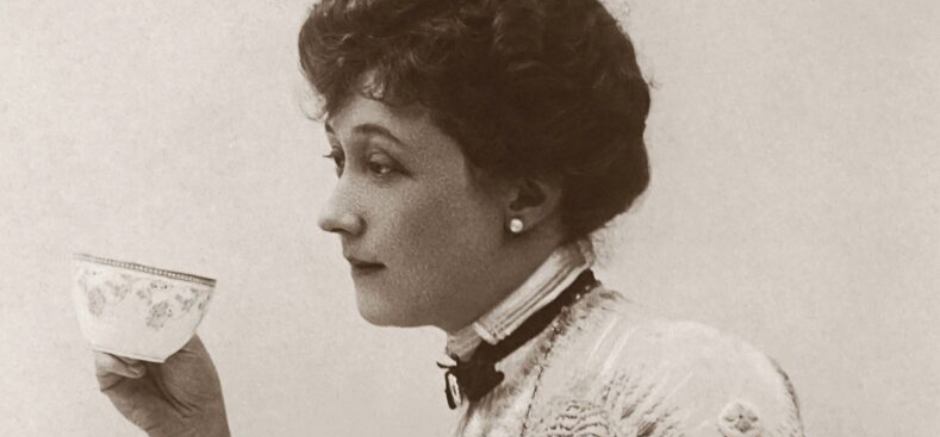
The history of coffee
|
|
Time to read 4 min

|
|
Time to read 4 min
We invite you to go back in time and discover the fascinating history of coffee.
Who discovered it and where did the coffee bean come from?
What about all the myths and legends about the origin and history of coffee and what is really true?
The history of coffee begins with its discovery. If we want to be precise, the coffee bean was not discovered by man.
At least if we are to believe the most widespread legend, that of Antonius Faustus Naironus. In his book De saluberrima potione cahve, published in 1671, he talks about the discovery of the coffee bean.
According to this report, it was actually goats who tasted the bean for the first time.
In the year 900, the shepherd Kaldi is said to have crossed the kingdom of Kaffa, present-day Ethiopia, with his sheep. Some of the sheep were eating the red cherries from the coffee tree along the path. Later in the evening, the shepherd noticed that the sheep were jumping very happily and could not find rest. Only the sheep that had eaten coffee cherries fell asleep.
The monks from the nearby monastery got wind of it and tasted the coffee cherries. Complaining of the bitter taste, they spat them into the fire.
The grains were thus roasted and a delicious smell floated in the air, which the monks also noticed. So they infused the roasted beans in water and drank their first coffee.
Enthusiasm was at its height, because the monks could now perform their night prayers without problem and without getting tired.
In the early 16th century, coffee conquered the Ottoman Empire, probably through slave traders. As the "wine of Islam", it quickly gained popularity among Muslims. With the consumption of wine strictly prohibited, they had now found a remedy that provided a similar stimulating effect.
Around 1511, the first coffee house was built in Mecca. It spread quickly and therefore had a great influence on the history of coffee. But to the great displeasure of Mourad IV, the sovereign of the time. Under his rule, coffee houses were burned and coffee drinkers were considered criminals. They were even prosecuted and punished. The few remaining cafés were generally disguised as barber shops.
The roots of this term lie in the ancient Arabic word Qahwah, which originally referred to wine.ein war.
Translated, it means that which excites.
Passing through the Turkish word kahve, it then reached the Italian caffè.
The French term café was then taken into German without further adaptation.
The history of coffee for Europe began when some European travelers were attracted by the Qahwah of the Ottoman Empire.
As a souvenir it became famous throughout Europe.
It was the Augsburg doctor Leonhard Rauwolf who popularized coffee in Germany in 1582. In 1615, the first bags of coffee arrived in Germany. But at first, this new drink was exclusively reserved for the nobility and the elite. It didn't have much to do with a small meeting of ladies around a coffee, it was mainly the men who benefited from this new pleasure.
In 1673, the first café opened in Bremen, which changed the lives of non-noble people.
Until this date, the norm was in fact to quench one's thirst mainly with wine, because water was considered laden with germs. Even children and pregnant women drank large quantities of wine. So it was with the arrival of coffee that people first woke up from their permanent state of inebriation.
With colonization, the coffee bean spread throughout the world. In 1645, the first European coffee house opened in Venice. London, Vienna and Paris followed a few years later. The rest of the world still had to wait, because the sale was primarily reserved for the Prussian state in order to profit from it. Even roasting coffee in private homes was strictly prohibited. This made coffee smuggling very lucrative.
It was ultimately the Dutch and English navigators who clandestinely imported the coffee tree into their colonies around the world.
The importation of the coffee tree marked the beginning of its cultivation. At the end of the 17th century, the Netherlands managed to cultivate the first coffee plants in Java, Indonesia. Sri Lanka and India soon followed.
The colonial powers then embarked on a race for cultivation zones. Britain and France introduced the plant to Central America, Africa and Australia.
In 1727, the Portuguese took an important step, because they were the ones who introduced the coffee plant to Brazil, which remains to this day the largest coffee-producing region in the world.
Greenhouse cultivation followed, but despite all efforts, it was not possible to cultivate the coffee bean in Europe.
Today we know that this is only possible in the so-called coffee belt, i.e. regions close to the equator. In fact, the coffee tree can only grow in a subtropical climate.
Today, coffee is a cult drink that we can no longer do without in our daily lives. Whether it's morning coffee, a coffee chat with friends or the savior when you're feeling down in the afternoon.
Trade is also booming: coffee is today the second most important commercial product.
In addition to the original variety, arabica, another variety of coffee appeared in 1889: Robusta.
Today, coffee is available in every variety and flavor imaginable, and there is something for everyone.
If you also want to find your favorite coffee, take a look at our boutique and treat yourself to quality organic coffee at fair prices .


